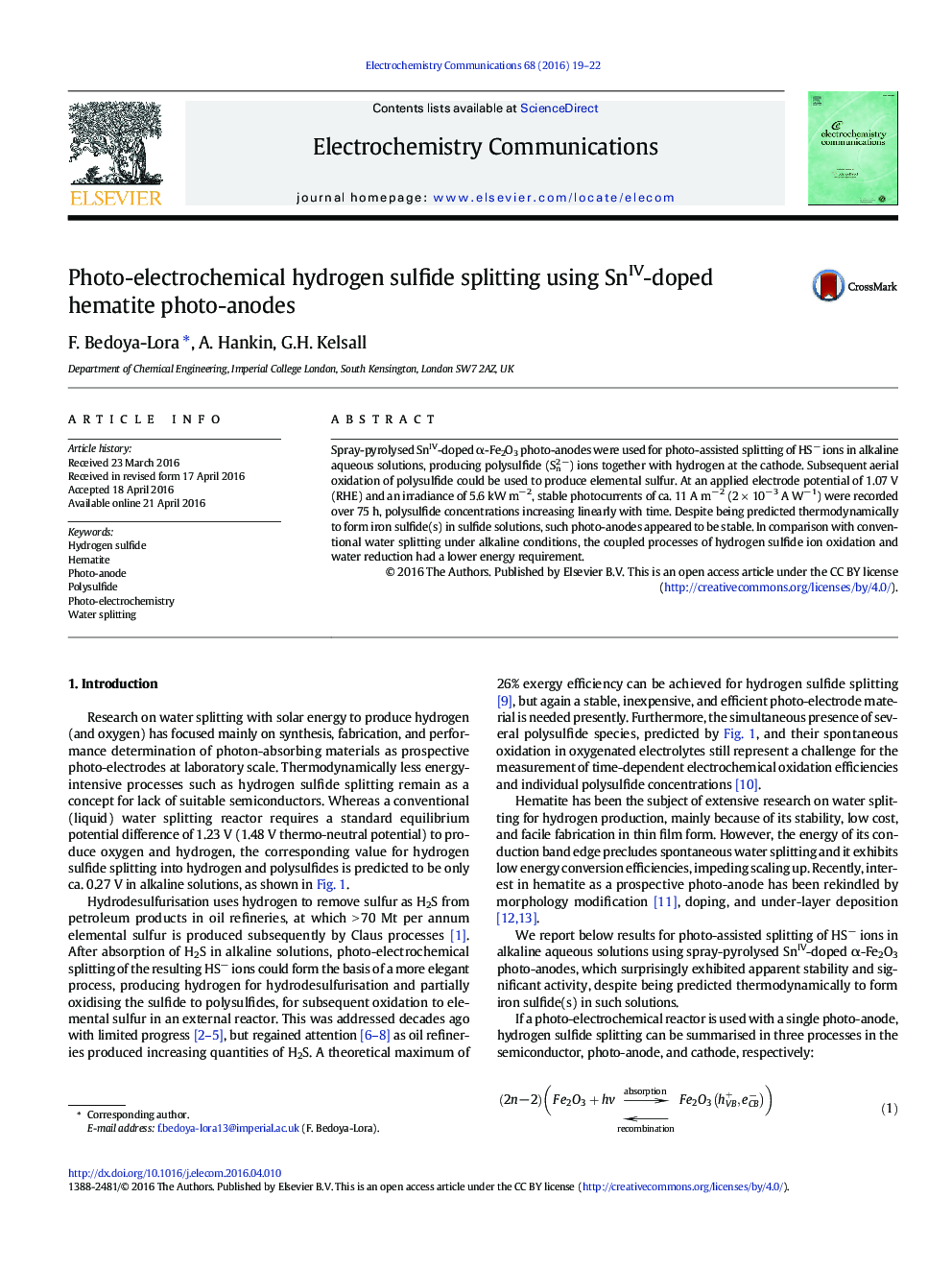| Article ID | Journal | Published Year | Pages | File Type |
|---|---|---|---|---|
| 6601127 | Electrochemistry Communications | 2016 | 4 Pages |
Abstract
Spray-pyrolysed SnIV-doped α-Fe2O3 photo-anodes were used for photo-assisted splitting of HSâ ions in alkaline aqueous solutions, producing polysulfide (Sn2 â) ions together with hydrogen at the cathode. Subsequent aerial oxidation of polysulfide could be used to produce elemental sulfur. At an applied electrode potential of 1.07 V (RHE) and an irradiance of 5.6 kW mâ 2, stable photocurrents of ca. 11 A mâ 2 (2 Ã 10â 3 A Wâ 1) were recorded over 75 h, polysulfide concentrations increasing linearly with time. Despite being predicted thermodynamically to form iron sulfide(s) in sulfide solutions, such photo-anodes appeared to be stable. In comparison with conventional water splitting under alkaline conditions, the coupled processes of hydrogen sulfide ion oxidation and water reduction had a lower energy requirement.
Related Topics
Physical Sciences and Engineering
Chemical Engineering
Chemical Engineering (General)
Authors
F. Bedoya-Lora, A. Hankin, G.H. Kelsall,
